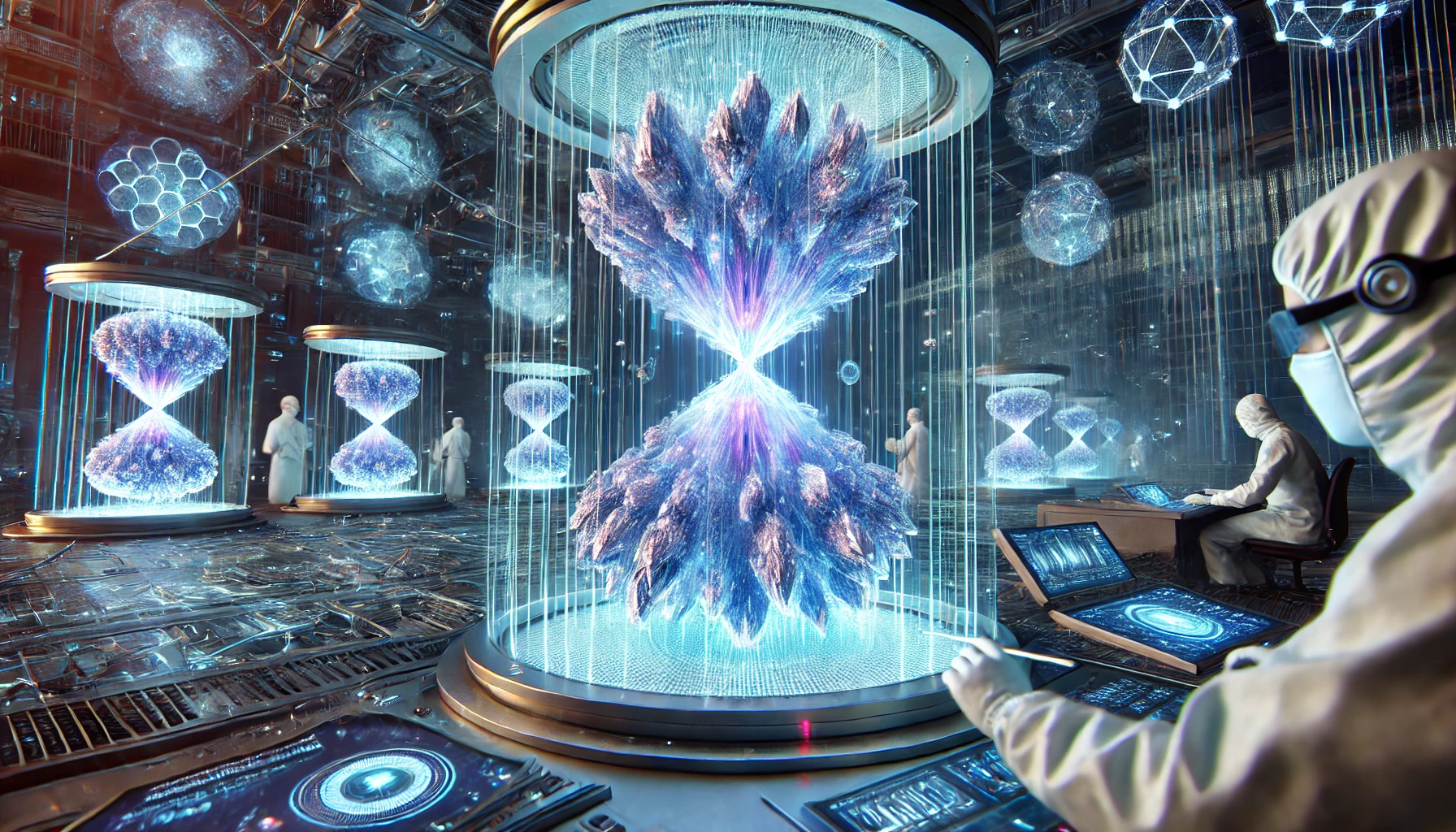Introduction
Time crystals represent a groundbreaking discovery in the realm of physics. Unlike conventional matter, which exists in equilibrium, time crystals exhibit a unique property where their atomic structures oscillate in a repeating cycle without expending energy. This phenomenon challenges fundamental concepts in physics and has the potential to revolutionize quantum computing and material science.
What Are Time Crystals?
Time crystals are a new phase of matter that periodically oscillates between states without external energy input. Unlike traditional crystals, which have repeating patterns in space, time crystals repeat their structure in time, behaving in a way that defies classical thermodynamics.
Key Characteristics of Time Crystals:
- Non-equilibrium State – Time crystals never settle into thermal equilibrium, making them fundamentally different from all other known phases of matter.
- Periodic Oscillations – The atomic structure oscillates at regular intervals, even in a state of lowest possible energy.
- Quantum Coherence – Time crystals rely on quantum mechanical properties to maintain their repeating motion.
How Are Time Crystals Formed?
The formation of time crystals is closely related to quantum mechanics and involves:
- Quantum Many-Body Interactions: Atoms in time crystals interact in a way that prevents them from reaching a state of equilibrium.
- Floquet Systems: Time crystals are often created in periodically driven quantum systems where atoms alternate between states at fixed intervals.
- External Stimulation: While time crystals maintain oscillations, they are typically induced by external pulses, such as lasers or electromagnetic fields.
Experimental Realization
Time crystals were first theorized in 2012 by Nobel laureate Frank Wilczek, and in 2016, researchers at Harvard University and UC Berkeley successfully created them in lab conditions. By using trapped ions and supercooled atoms, scientists observed the periodic motion that characterizes time crystals.
Why Are Time Crystals Important?
The discovery of time crystals has significant implications across various fields of physics and technology:
- Quantum Computing: Time crystals could serve as stable building blocks for quantum processors, improving computational efficiency.
- Material Science: The unique properties of time crystals could lead to the development of new materials with unprecedented functionalities.
- Fundamental Physics: Studying time crystals helps scientists understand non-equilibrium systems and potential new laws of physics.
Challenges and Future Research
Despite their potential, time crystals remain a relatively new field of study, and scientists face several challenges:
- Stability Issues: Ensuring long-term stability of time crystals under real-world conditions.
- Practical Applications: Finding ways to integrate time crystals into existing quantum technologies.
- Understanding Mechanisms: Further research is needed to fully explain how time crystals interact with their environment.
Conclusion
Time crystals represent a paradigm shift in physics, offering new insights into the nature of matter and time itself. As research advances, these exotic states of matter may revolutionize quantum computing, material science, and our understanding of the fundamental laws of physics. It’s time to understand the fire rainbows.

